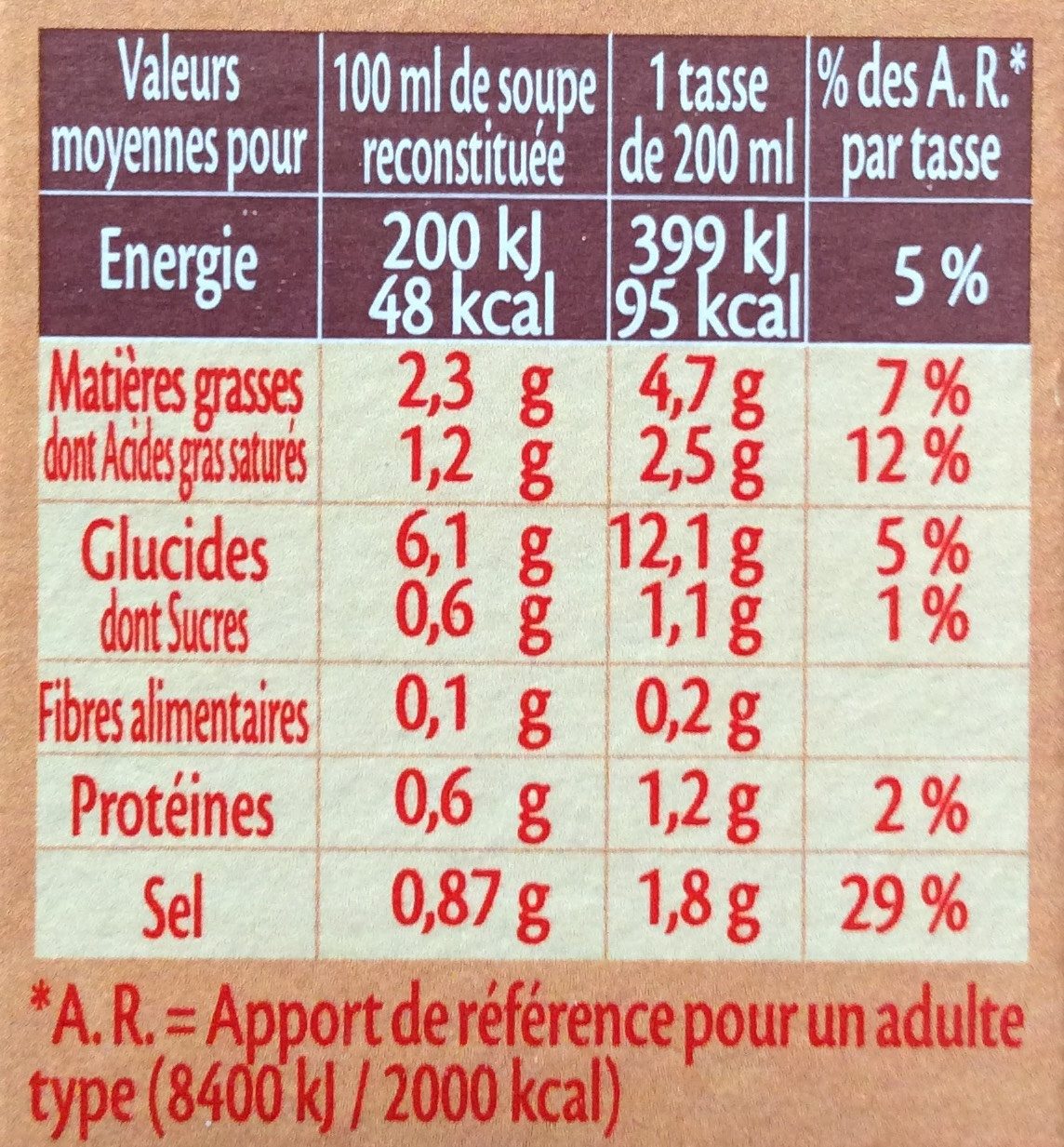Crème de Champignons & Mini Croûtons - Royco - 60 g
This product page is not complete. You can help to complete it by editing it and adding more data from the photos we have, or by taking more photos using the app for Android or iPhone/iPad. Thank you!
×
Barcode: 3036812100376 (EAN / EAN-13)
Quantity: 60 g
Brands: Royco
Categories: Plant-based foods and beverages, Plant-based foods, Fruits and vegetables based foods, Vegetables based foods, Meals, Dried products, Mushrooms and their products, Dried products to be rehydrated, Soups, Cream soups, Dried meals, Cream of mushroom soups, Dehydrated soups
Countries where sold: France
Matching with your preferences
Environment
Packaging
Transportation
Threatened species
Report a problem
Data sources
Product added on by openfoodfacts-contributors
Last edit of product page on by packbot.
Product page also edited by beniben, kiliweb, yuka.WjVBK09xRUJ2ZmxibXRzRXBoajE5ZkZybDVPdGR6S2VLdkJKSUE9PQ.
If the data is incomplete or incorrect, you can complete or correct it by editing this page.








